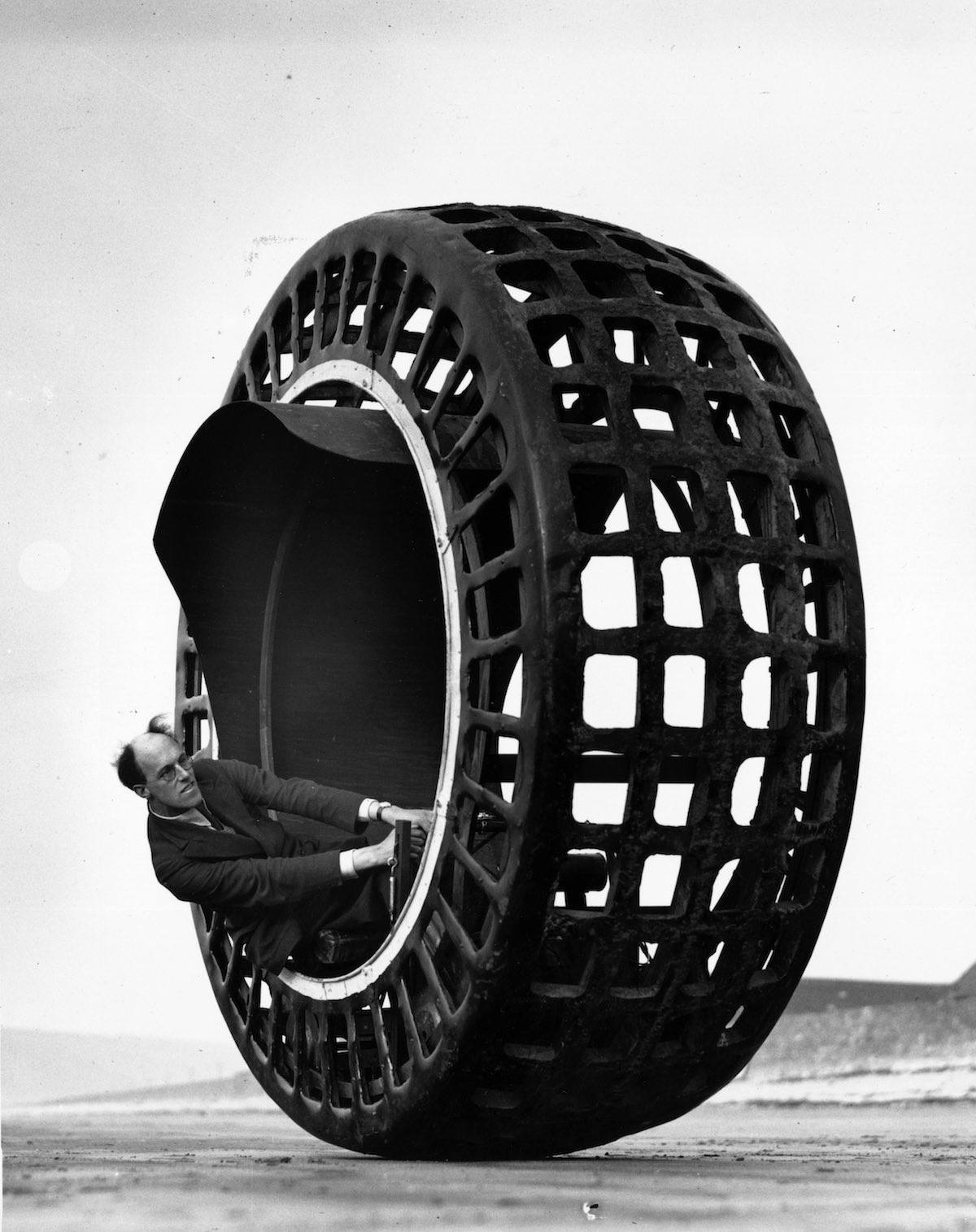Almost immediately inventors were attempting to do away with the second wheel, and in 1869 four different machines appeared, one of them the subject of the first monowheel patent.
Why build a monowheel? Working with a single wheel could result in a more efficient mode of transport, as would the associated reduction in size, weight, and resistance. For some inventors, here was a new and simpler form of mechanised locomotion. For others, the monowheel was a toy, a novelty – albeit one with a very high thrill factor.
But there were more than a few problems inherent in the design that inventors sought to overcome – impeded view, lack of stability, the difficulty of steering and the phenomenon of “gerbiling.” Because a monowheel rider relies on gravity to remain upright, if the machine accelerates or brakes too quickly, the rider spins inside the machine like a pet gerbil in its wheel.
In a conventional bicycle one wheel provides the propulsive force, the other, steering, but a monowheel wheel has to provide both. Leaning, using skids providing drag or extra small wheels or a gyroscopic steering mechanism have all been explored. Keeping upright in a monowheel requires skill and some machines employed an extra wide wheelbase to aid this.
Monowheels are still being produced and ridden today. There are monowheel enthusiasts in the UK and a British Monowheel Association, and a Monovelo machine featured in the closing ceremony of the 2008 Beijing Olympics. A monowheel was also the transport of choice of coughing cyborg bad-guy General Grievous in Star Wars Episode III.
Because a single wheel is all you need for speed.
September 1932
J. A. Purves drives a Dynasphere spherical car, an automobile shaped like a giant radial tire. Mr. Purves was the vehicle’s inventor.
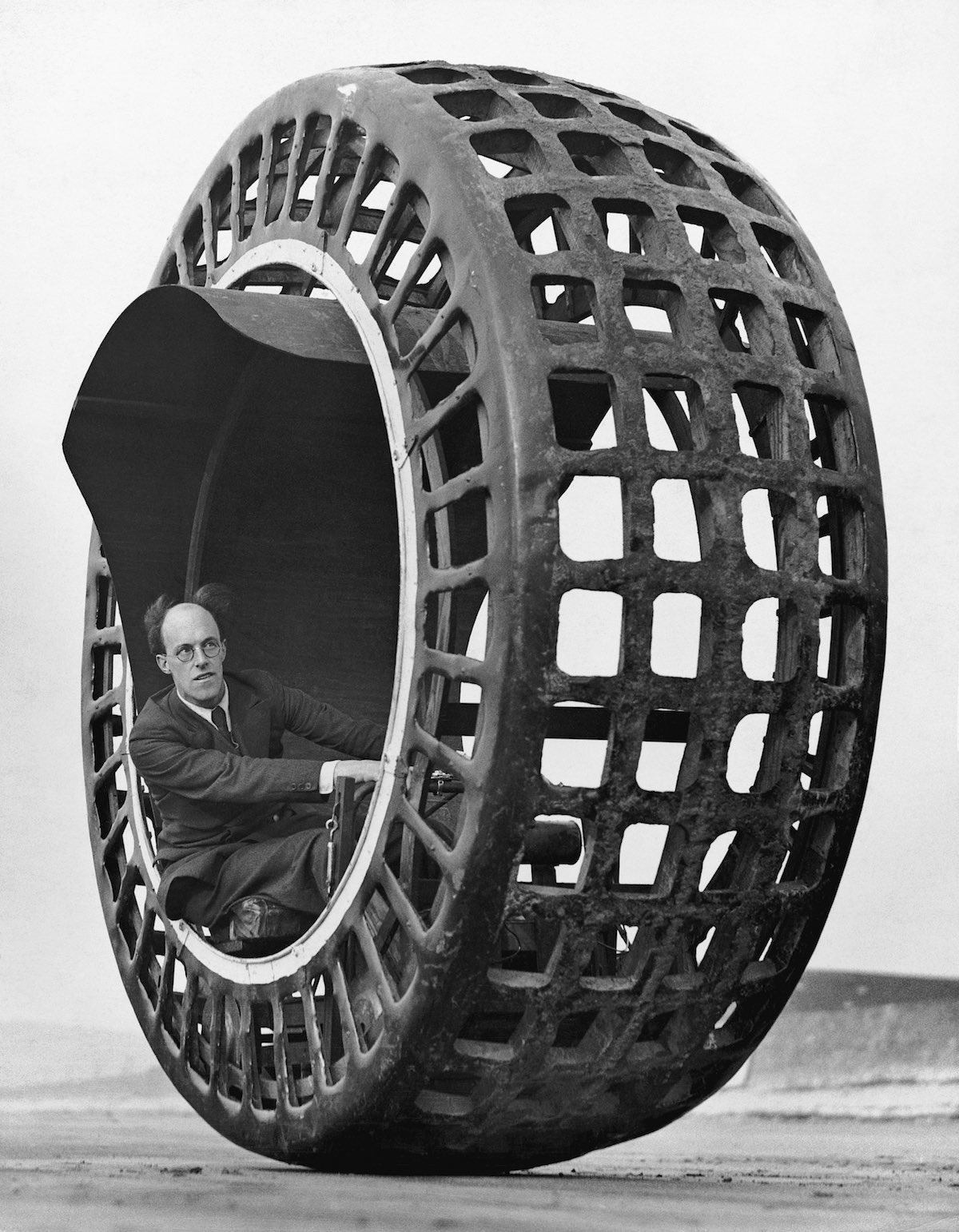
December 1924
It possesses so many advantages that we may eventually see gigantic wheels similar to that shown on our cover running along our highways in as large numbers as motor cars do to-day. – Meccano Magazine, Feb. 1935
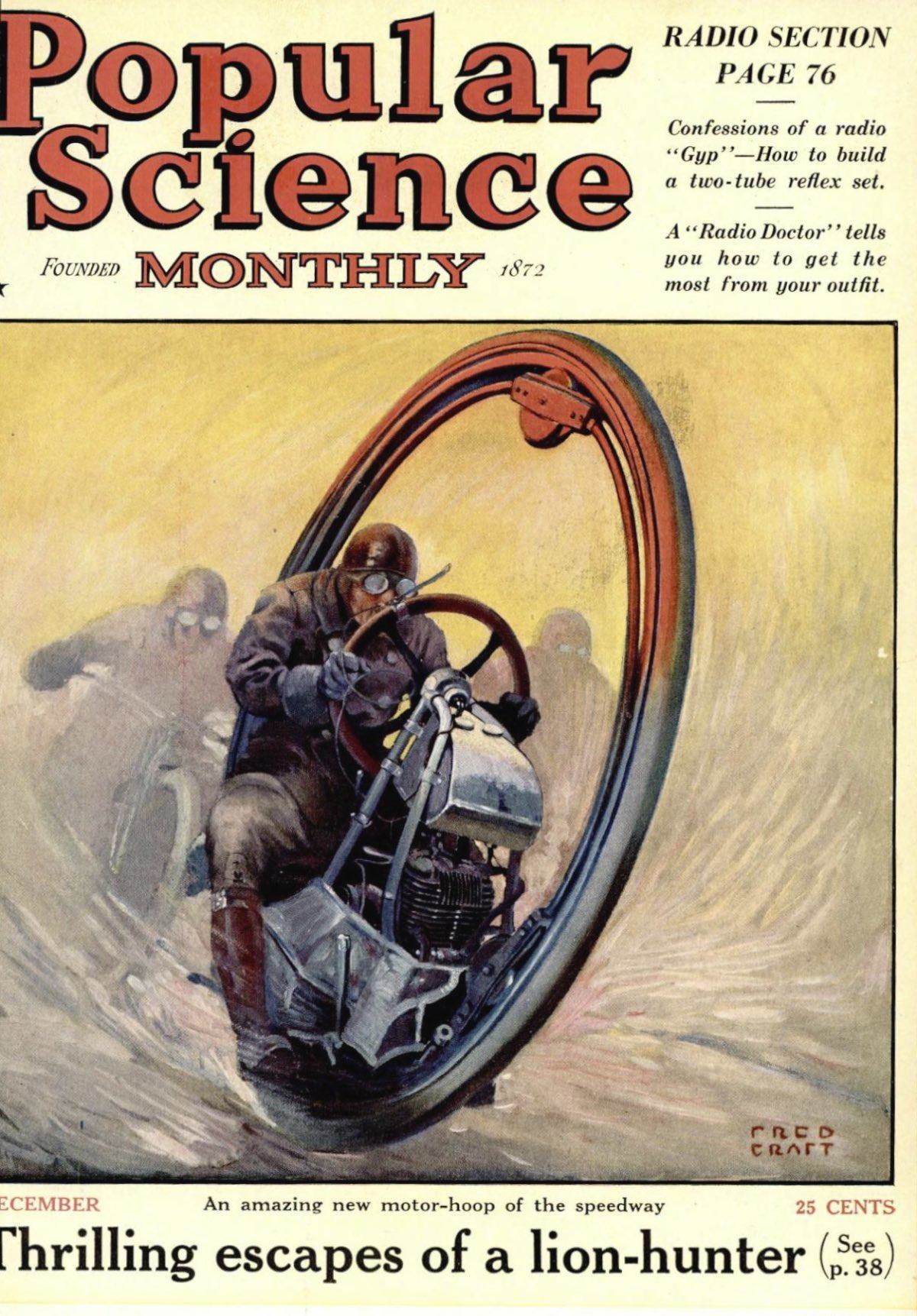
May 1932
Cover of Popular Science Monthl
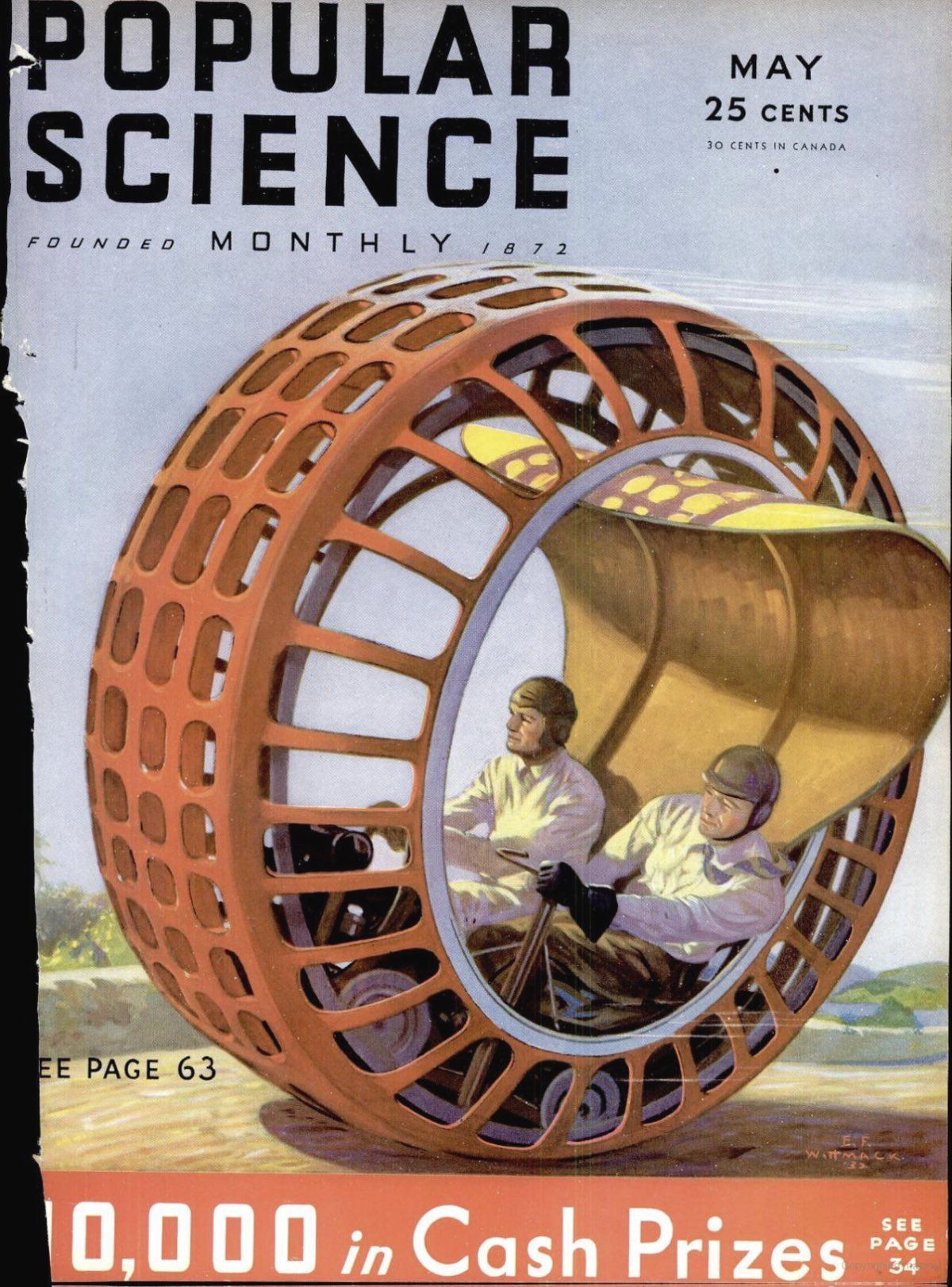
February 8, 1932
Electronically driven wheels which revolve while the drivers remain stationary are tested at Bream Sands, Weston-super-Mare, Somerset, England.
A 10-foot hoop of iron lattice work chug-chugs along an English highway. Passing motorists slow down, and pause to peer at the apparition. The man inside it is driving as unconcernedly as if he were out for a Sunday airing. – Popular Science, May 1932
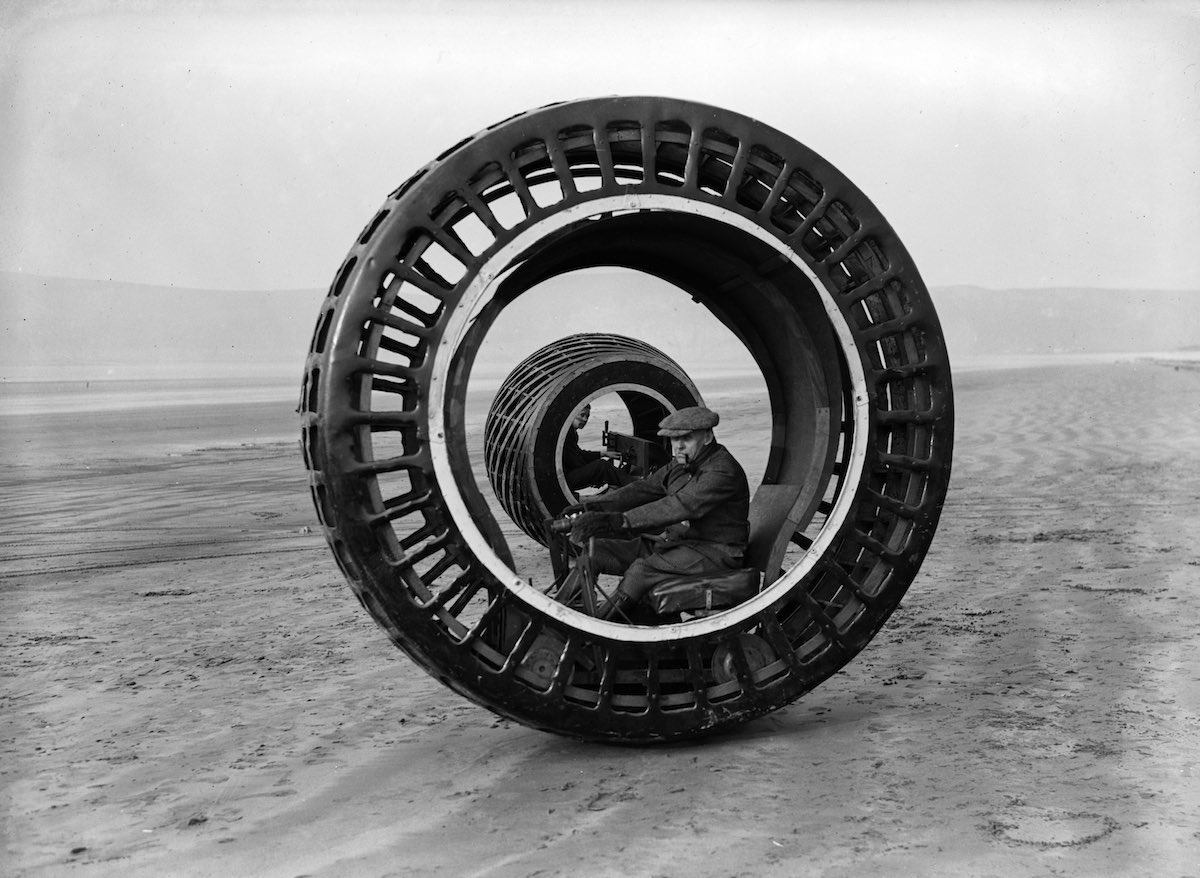
February 1932
Dynasphere wheels being driven on Beans Sands near Weston-super-Mare, Somerset, England.The petrol driven model is on the right and the smaller, electric model is on the left. The inventor Dr J. A. Purves of Taunton hoped to revolutionize modern transport with them.
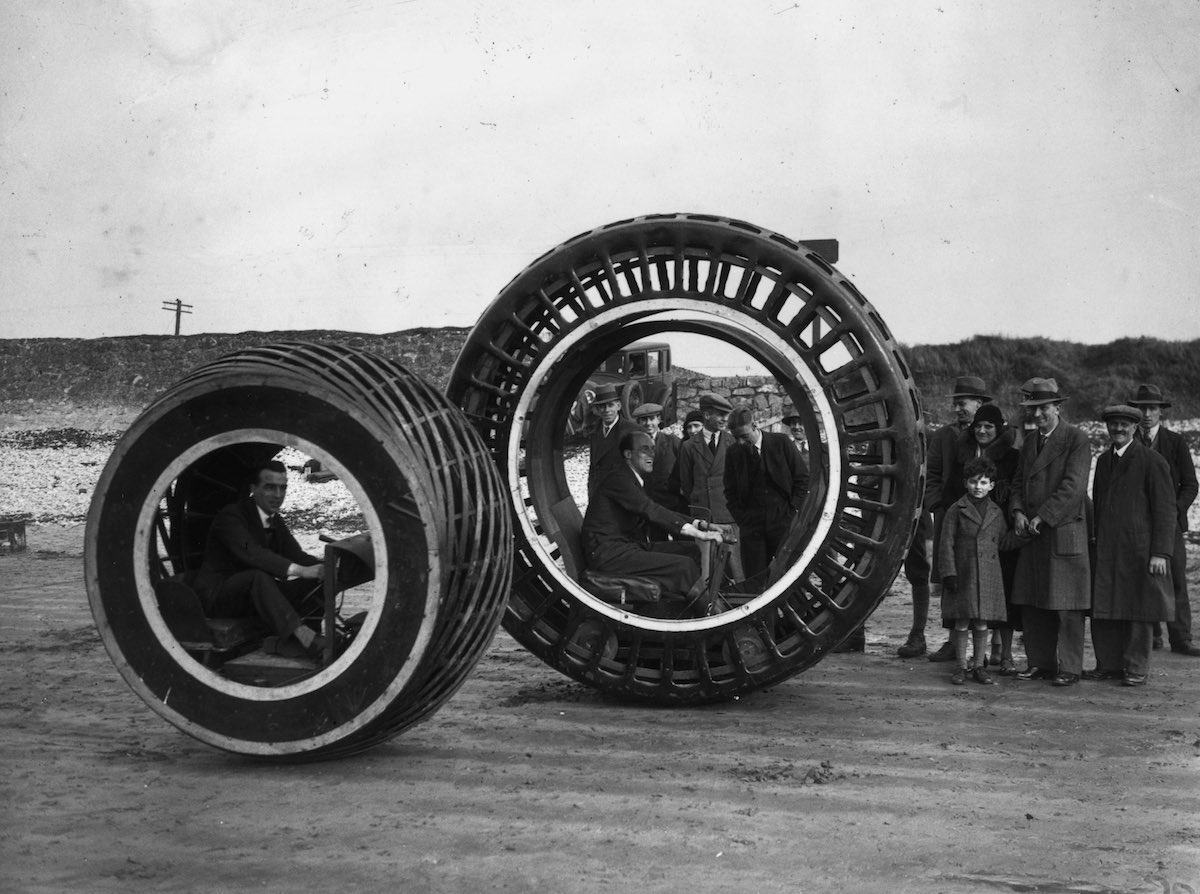
September 1932
A Dynasphere being demonstrated at Brooklands race track, Surrey, England.
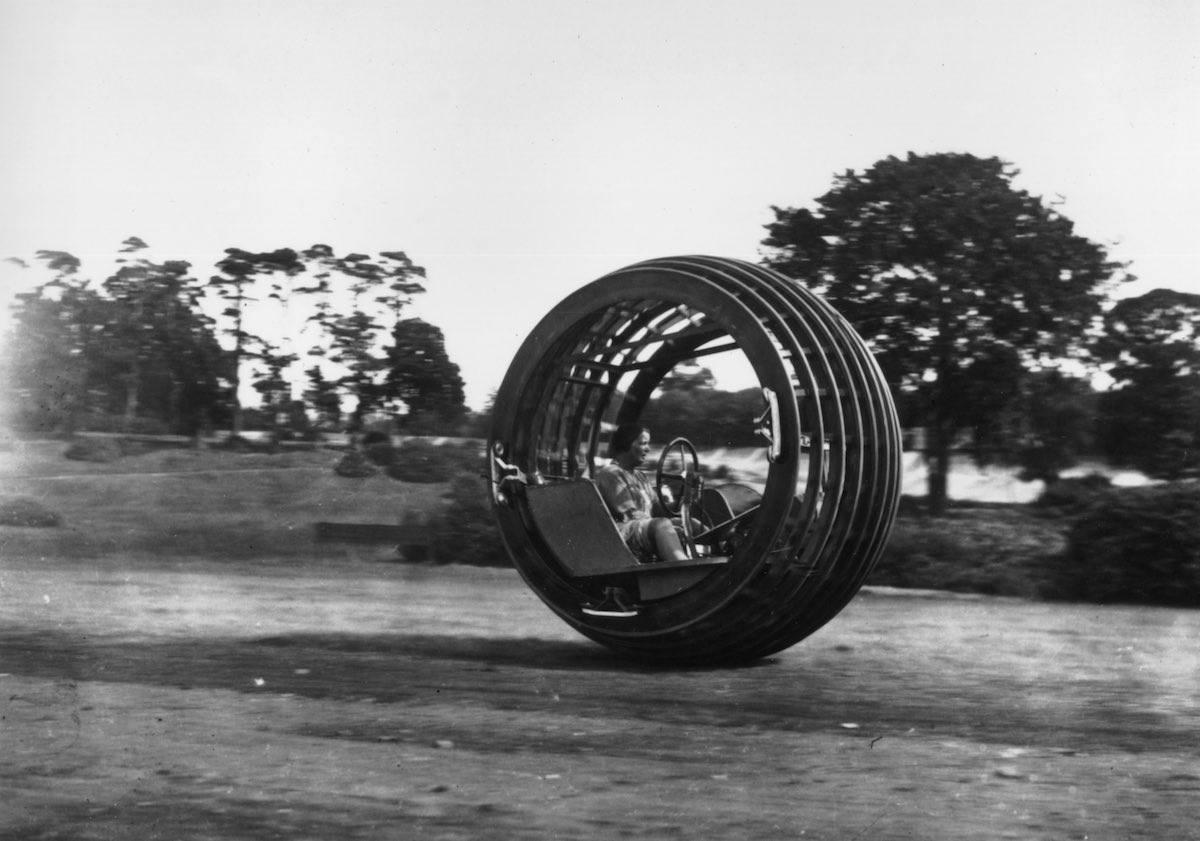
1932
The Dynasphere was capable of speeds of 30mph.
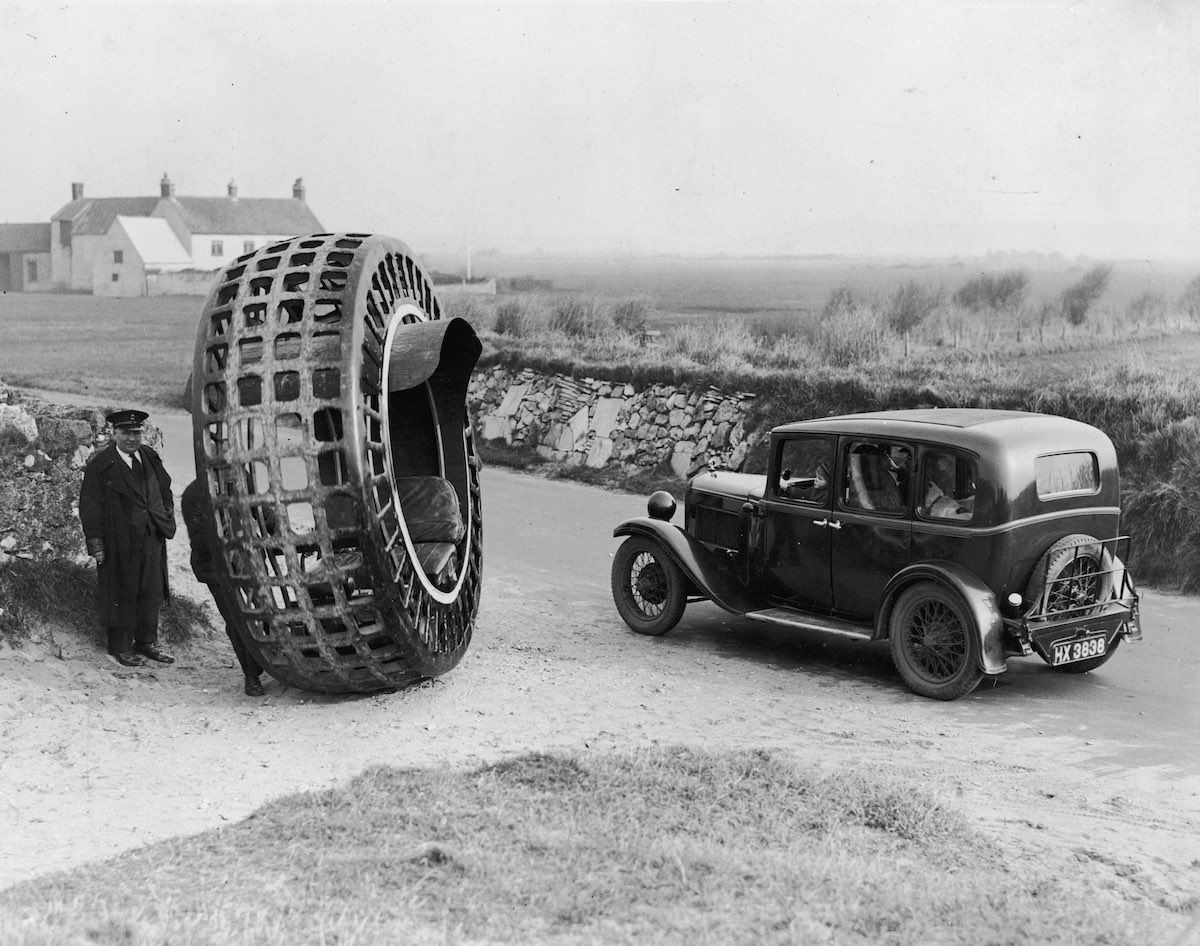
September 1932
Weybridge, Surrey, England, UK -The Dynasphere is demonstrated.
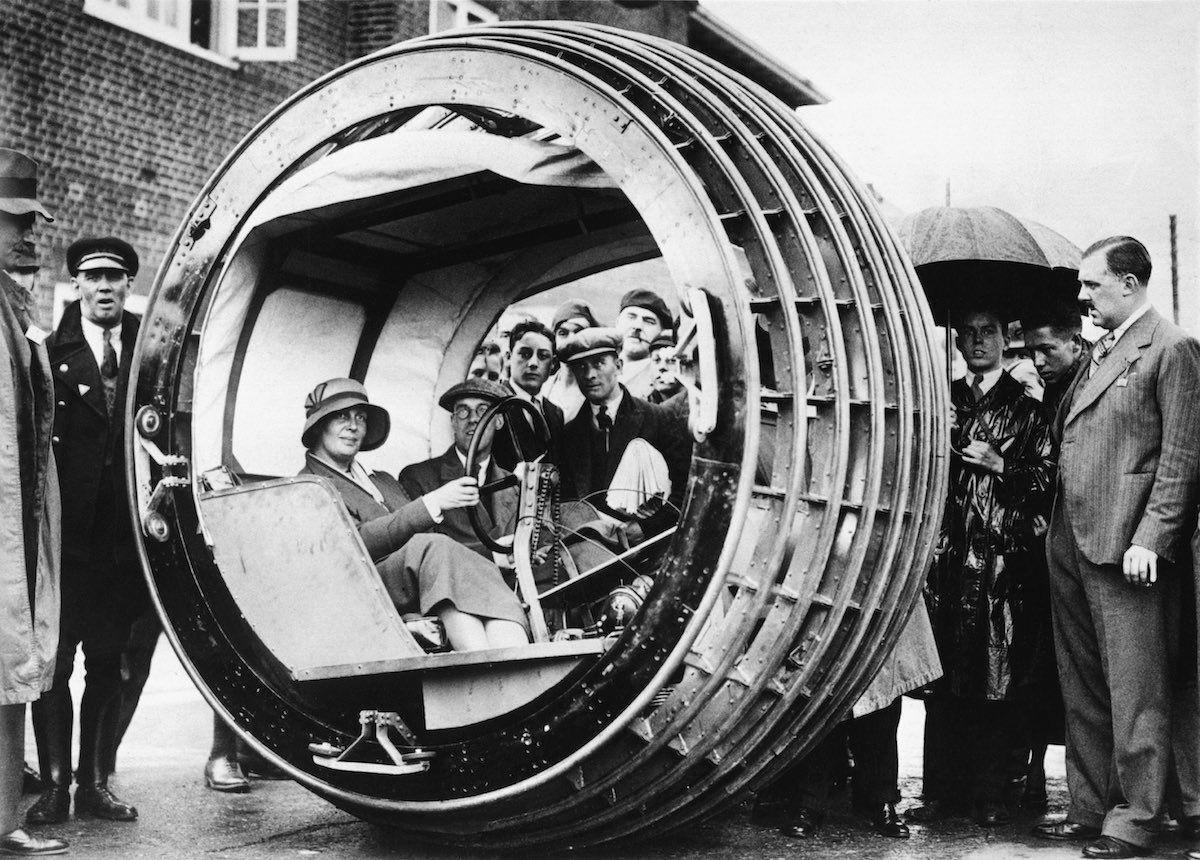
September 1, 1931
Swiss engineer M Gerder at Arles, France, on his way to Spain in his “Motorwheel,” a motorcycle with a wheel which runs on a rail placed inside a solid rubber tire.
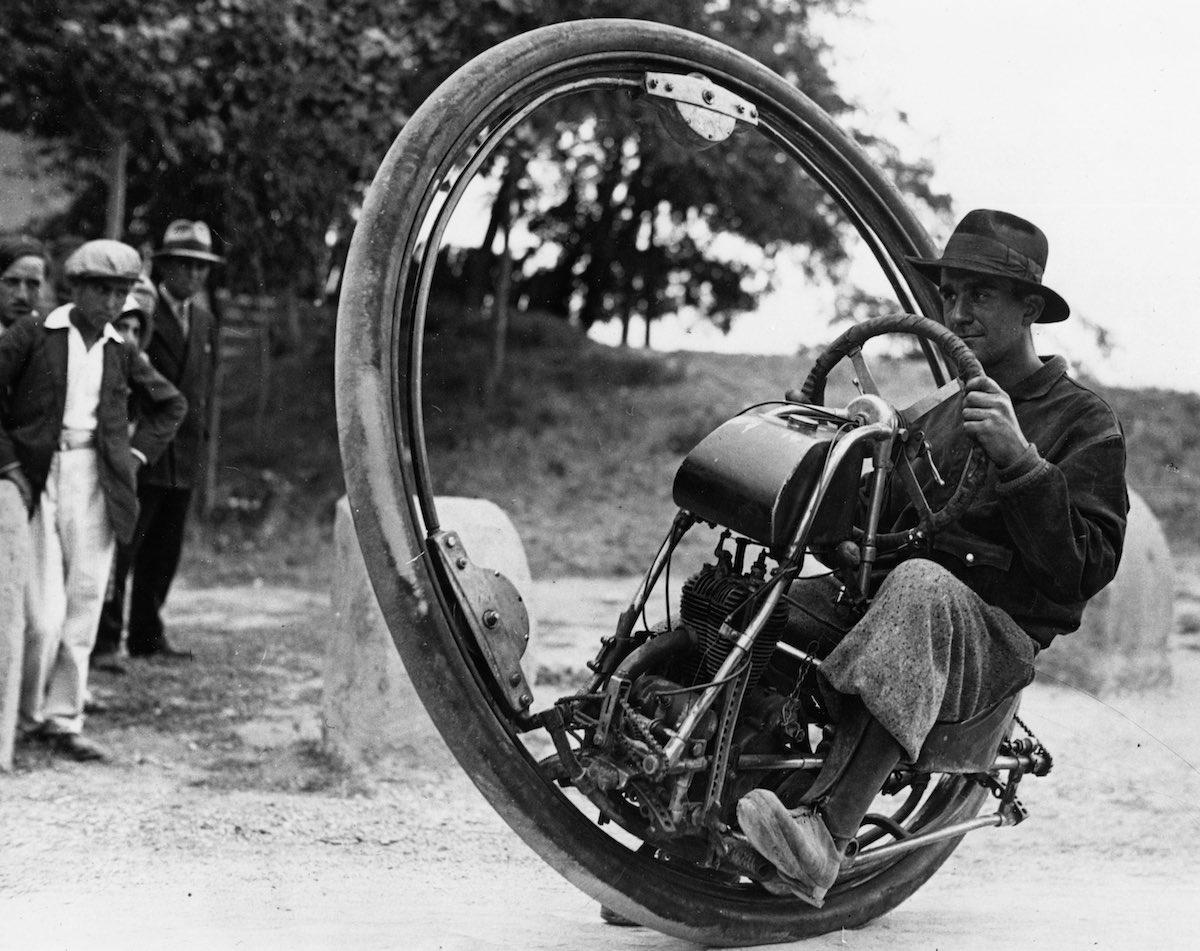
1935
A man on a penny-farthing bicycle alongside Walter Nilsson aboard the Nilsson monowheel.
As a lad I lived in Weston-super-Mare. One day in the 1930s I went to the beach and saw a man trying to drive a huge wheel across the sands. It wasn’t very successful and wobbled about… I have always wondered what it was or whether I imagined it. – Weston resident via BBC
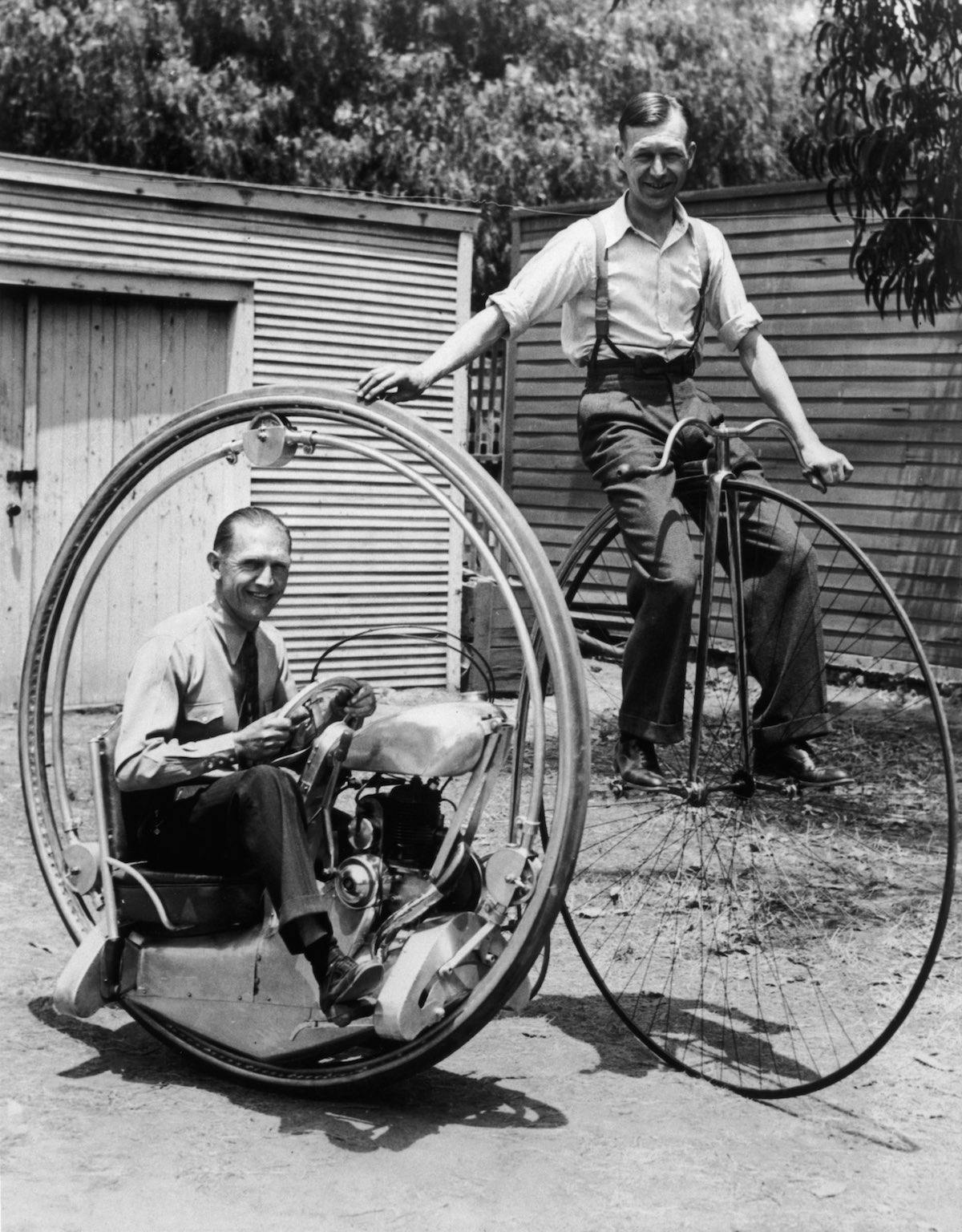
February 1932
